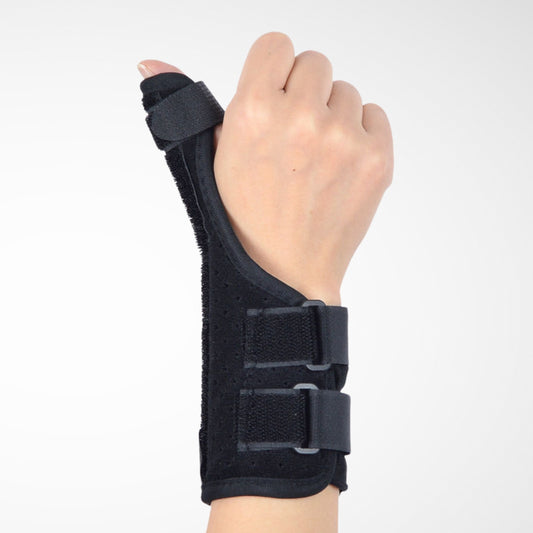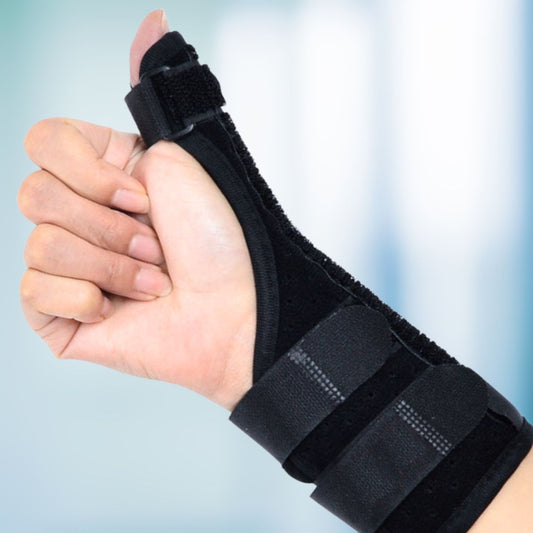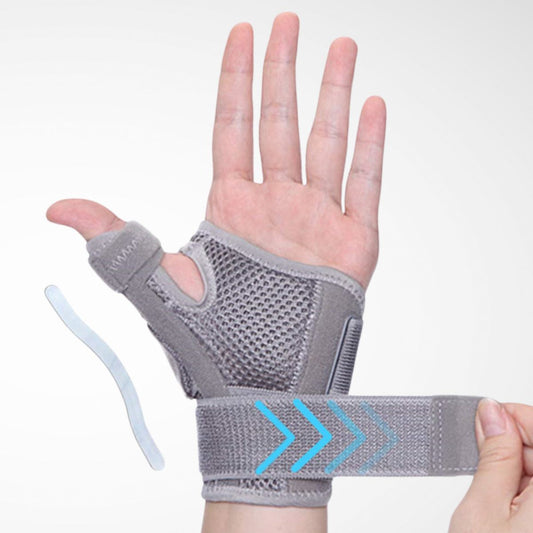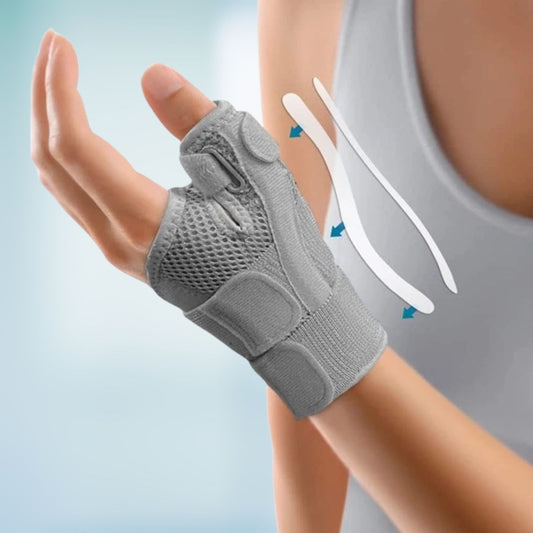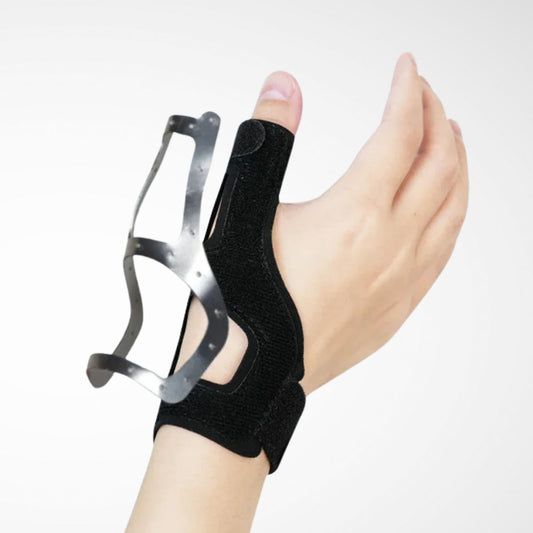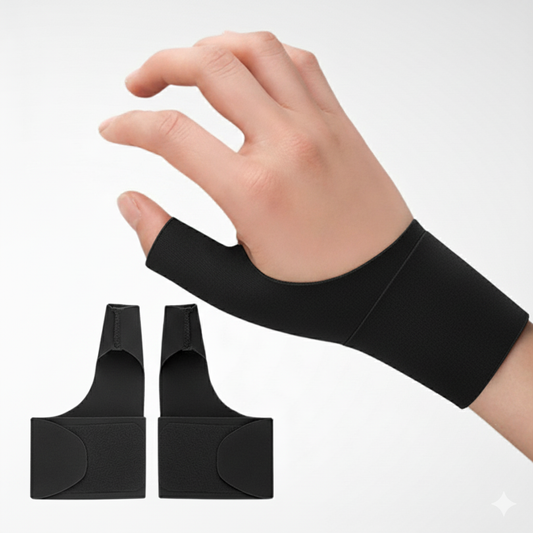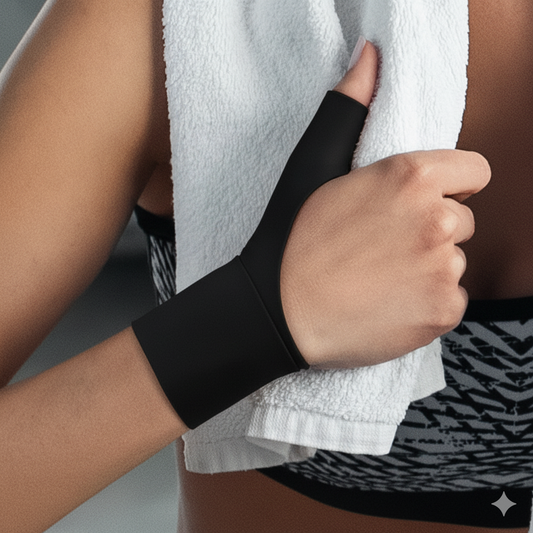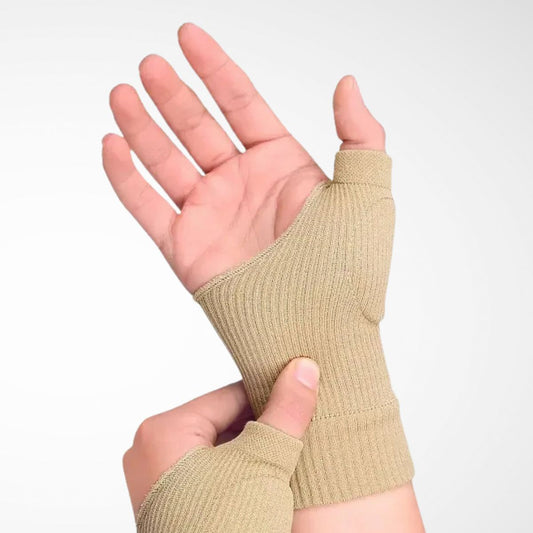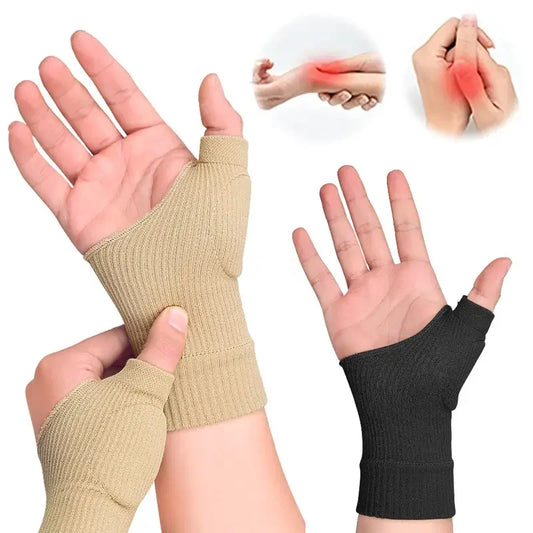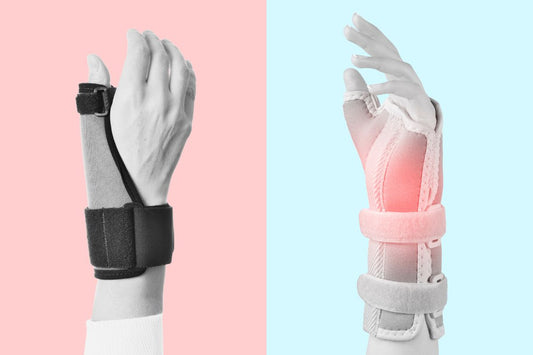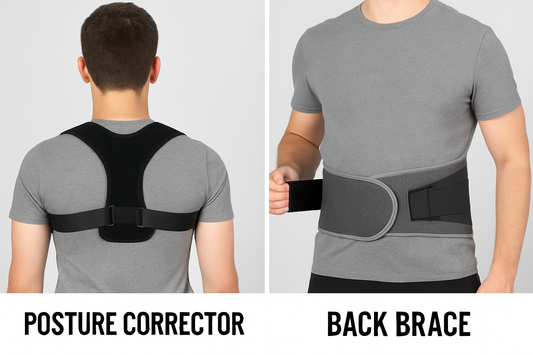Whether you’re teeing off at your local course or training for your next tournament, thumb pain is one of those nagging issues golfers rarely expect — until it starts affecting your swing.
In this article, we’ll explore the causes of thumb pain in golfers, how to recognize early signs of injury, and the best ways to support recovery — including tips on grip correction, smart equipment use, and when to consider a golf thumb sprain brace.
What Causes Golf Thumb Injuries?

Your hands and thumbs are constantly in motion during a swing — flexing, rotating, and absorbing impact. If your grip mechanics are off or your thumb is placed incorrectly, that repeated pressure can lead to overuse injuries.
Common causes include:
- Improper thumb placement on the grip, which can strain the ulnar collateral ligament (UCL)
- Repeated impact and vibration from hitting the ball or ground
- Grip pressure that’s too tight, leading to tendon irritation
- Long sessions without rest, especially for senior or casual golfers
Over time, this stress adds up — resulting in pain, inflammation, and even ligament damage if ignored.
Symptoms of Golf Thumb Injuries
If you’re feeling any of the following, your body might be signaling an issue:
- Pain or tenderness at the base of the thumb, especially near the webbing
- Swelling after playing or gripping a club
- Decreased thumb flexibility or range of motion
- Sharp pain during downswing or follow-through
- Difficulty gripping a club without discomfort
These symptoms are often linked to a form of repetitive strain injury or golfers’ thumb, which typically affects the lead hand.
How to Prevent and Treat Golf Thumb Injuries
1. Adjust Your Grip

The quickest fix may start with your form. Many golfers unknowingly place their thumbs too far across the club or apply uneven grip pressure — especially during high-torque swings.
A few tips:
- Your lead-hand thumb should lie straight down the shaft, not wrapped around it
- Grip pressure should be firm but not tight (think 5–6 out of 10)
- Avoid “death gripping” the club, which fatigues the thumb and wrist
A golf coach or pro shop tech can help evaluate your swing for better grip mechanics.
2. Rest and Ice
If your thumb is already inflamed or painful:
- Take a break from play to avoid further irritation
- Apply ice packs for 15–20 minutes a few times a day to reduce swelling
- Elevate the hand when possible
Don’t play through the pain — even a few days of rest can prevent a longer-term issue.
3. Use a Thumb Brace or Thumb Stabilizer
A thumb brace offers extra support and restricts motion in the injured area, especially helpful during:
- Practice swings or rounds where pain might flare
- Post-injury recovery while returning to activity
- Daily use, if you’re struggling with arthritis or repetitive stress injuries
Look for a thumb spica splint or a lightweight thumb stabilizer that still allows a functional grip but protects the joint from further strain. Some braces even work comfortably under a golf glove.
4. Try Protective Gear or Grips

Some golfers benefit from:
- Club grips with extra padding or ergonomic shaping
- Thumb sleeves or guards that reduce friction
- Shock-absorbing gloves to minimize vibration on impact
These small changes can significantly improve comfort — especially during long play sessions.
5. Build Thumb and Wrist Strength
Mobility and strength in the hand go a long way in preventing re-injury. Consider adding:
- Thumb abduction exercises using a rubber band
- Wrist curls with light dumbbells
- Ball squeezes or grip trainers
- Stretching routines for the hand, wrist, and forearm
These can be done at home or in between practice rounds.
When to See a Specialist
If pain persists or worsens even with rest and support, consult a healthcare provider. In more serious cases (like UCL tears), a thumb MRI or orthopedic evaluation may be necessary to rule out ligament damage or the need for medical intervention.
Final Words
Thumb pain might seem like a small issue, but for golfers, it can seriously disrupt your game and long-term comfort. Understanding the mechanics of your golf thumb injury and acting appropriately early is key to recovery. Discipline in this regard can be important to avoid further worsening of the thumb condition, which would take even more time to heal in the future if not cared for properly.
From simply resting to supportive thumb braces, small proactive steps can help you return to the course sooner without pain and with more confidence in every swing.


